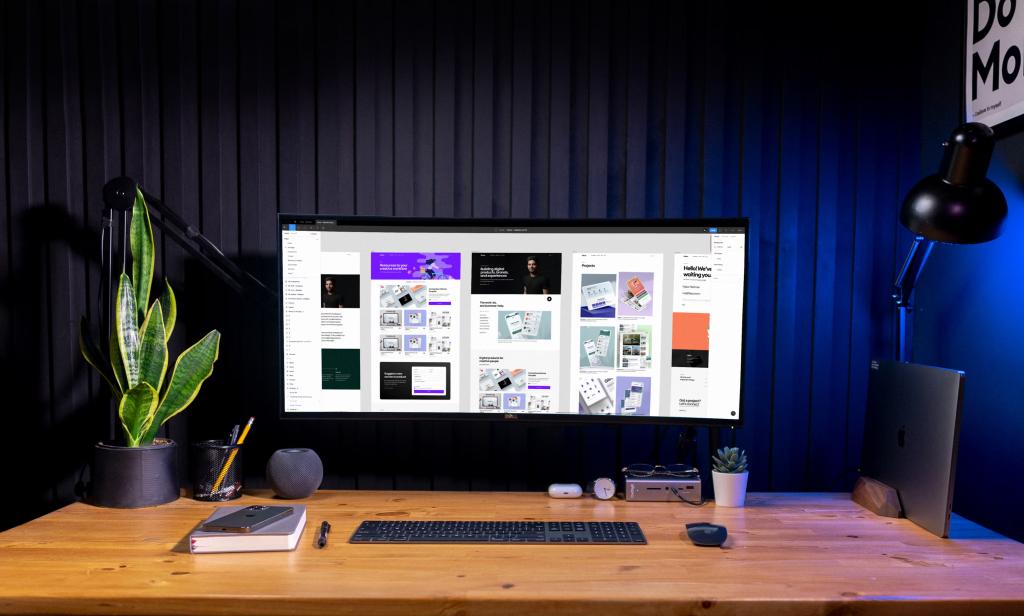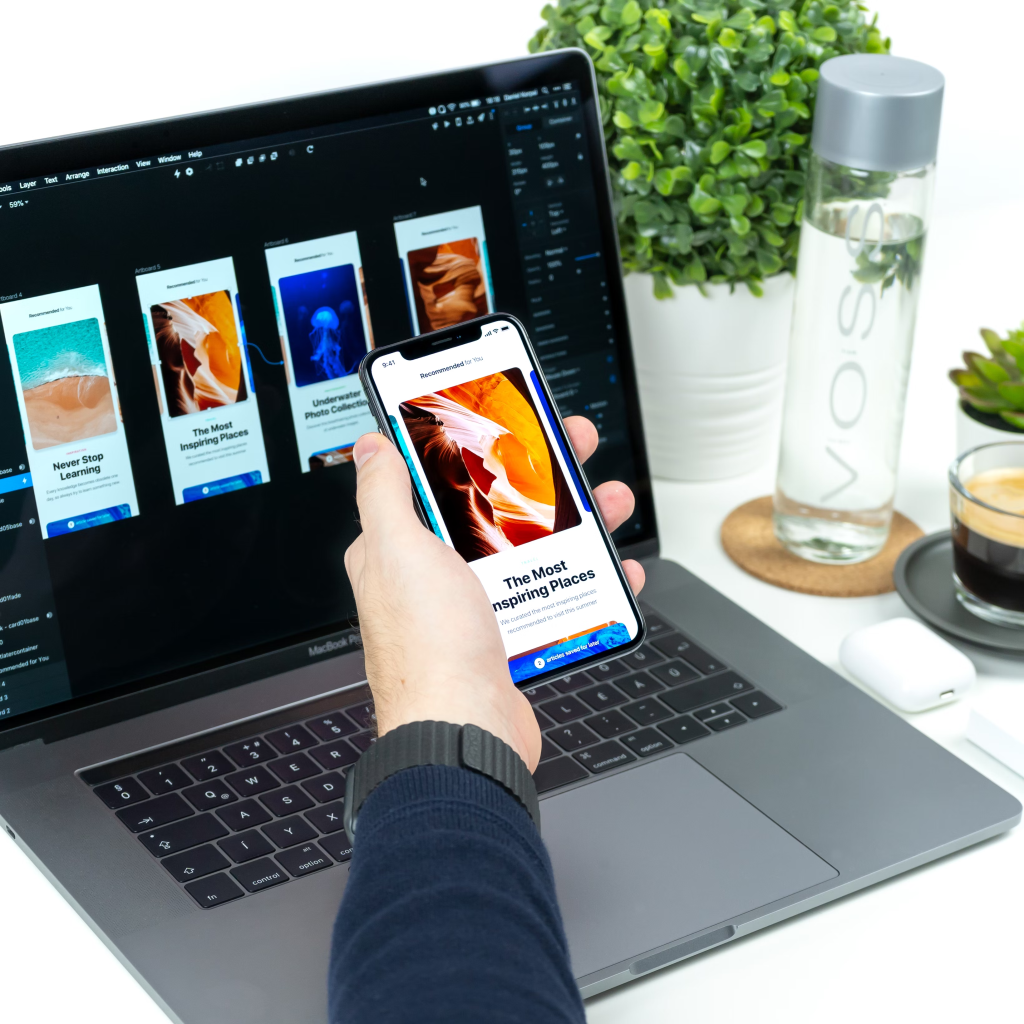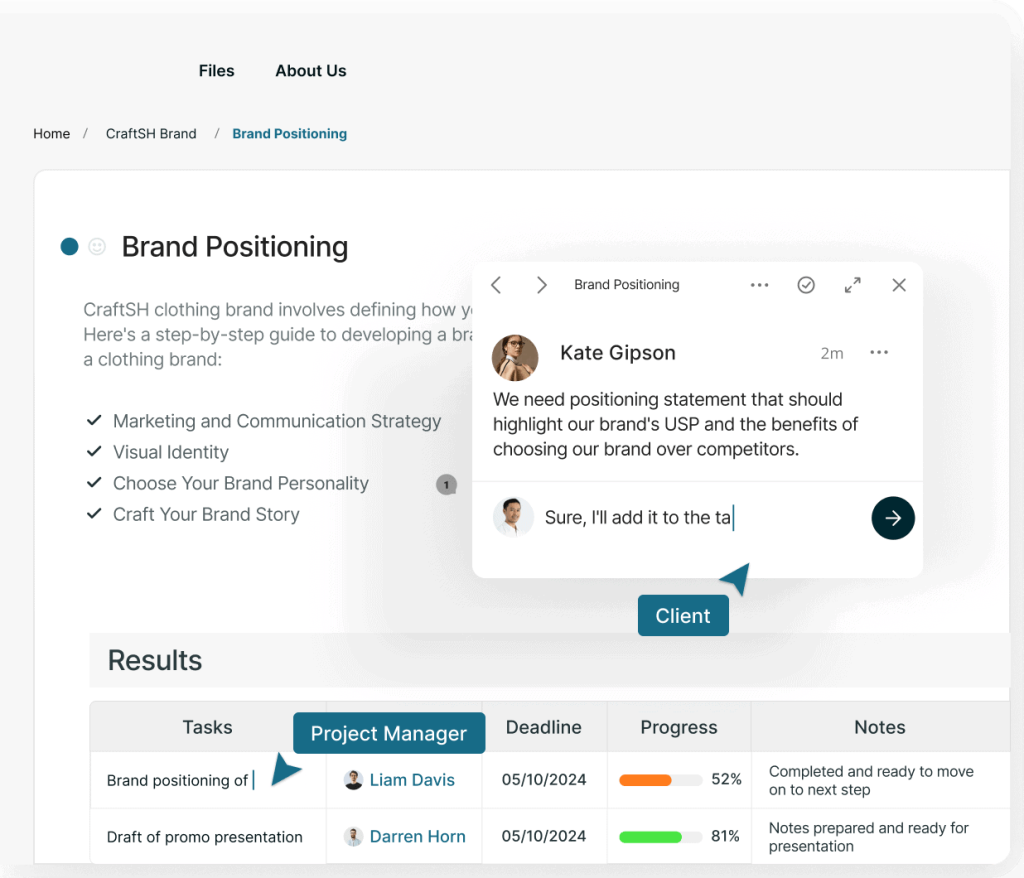
Did you know that 68% of businesses report that brand consistency can boost profits by up to 20%? Yet, only 31% manage to enforce these guidelines effectively. Imagine your brand’s identity could be accessed effortlessly by anyone in your organization. No more digging through endless PDFs or waiting days for content requests to be fulfilled. A well-structured brand portal can streamline your branding efforts, ensuring that your digital assets are always up-to-date and easily accessible.
Consistency in your brand’s tone, colors, and logos isn’t just about looking good — it’s about building trust and authenticity. Discover how a brand portal can serve as a centralized resource hub to store, manage, and effortlessly access your brand’s digital assets, ensuring uniformity and authenticity.
What is a Brand Portal?
A brand portal is a web-based platform that stores all your company’s digital assets. Unlike digital asset management (DAM) systems, which are mainly for internal use, brand portals are designed to ensure consistent branding by allowing external partners like advertising agencies and the media to access these assets. This platform includes everything from brand guidelines and templates to imagery, fonts, colors, and written materials like articles and press releases. It also tracks the history of versions and updates, ensuring you know who uses your assets, how, and when.

Note: While ‘brand portal’ and ‘branded portal’ are often used interchangeably, they are not the same. A branded client portal is customized for customer communication and infused with your brand identity. In this article, we focus on ‘brand portals.’
To keep your branding consistent and efficient, your brand portal should have the following features:
1. Brand Guidelines
Imagine you’re launching a global marketing campaign for a new product. Having a centralized brand guideline ensures that your team in New York and your agency in Tokyo are on the same page, maintaining a consistent brand image worldwide. Gather all brand identity elements like logo usage, color palette, typography, and tone of voice in one place to ensure all users adhere to the same brand standards.
2. Data Organization, Search, and Filtering

Suppose your marketing team needs to find last year’s holiday campaign assets. With advanced search and filtering, they can quickly locate the files by typing in keywords like “holiday 2022” or filtering by date and category. Implementing robust search capabilities based on keywords, tags, and categories makes asset retrieval quick and easy.
3. Security and Access Control
Your PR team can grant journalists access to a media kit without worrying about them seeing confidential internal documents, ensuring sensitive information stays secure. By defining access rights for different stakeholders like internal teams, external agencies, and journalists, you can prevent unauthorized access and modifications, thereby protecting brand integrity.
4. Reporting and Analytics
By analyzing asset usage, you might discover that your product demo video is the most downloaded file. This insight can guide you to create more similar content, boosting engagement. Tracking asset usage helps optimize brand management strategies by providing valuable data on who accesses and uses your digital assets.
5. Version Control and Easy Updating
When updating your company logo, version control ensures that everyone uses the latest approved version, preventing outdated logos from appearing in new marketing materials. Offering version control features and a clear workflow for approvals ensures users have access to the latest approved versions of assets.
6. Scalability and Growth Support
As your company grows and you launch new products, the platform can easily handle the increased volume of assets and users, ensuring smooth operations. Choosing a platform that can accommodate future growth in data storage and functionality supports business expansion without hassle.
7. Mobile-Friendly Access

A sales rep can quickly pull up the latest product brochure on their tablet during a client meeting, ensuring they always have the most up-to-date information at their fingertips. Providing access from desktops, laptops, tablets, and mobile phones enables users to access brand assets on the go.
8. Multilingual Support
If your company operates in multiple countries, you can store marketing materials in different languages, ensuring that your message is clear and effective no matter the audience. This makes your communication with stakeholders more efficient and inclusive by allowing you to store assets or generate marketing materials in multiple languages.
How to Determine Your Brand Portal Needs
To ensure the effectiveness of your brand portal, whatever features you choose to implement, make it user-friendly, secure, and easily updatable. Here are some additional points to consider and tips to follow:
- Map Existing Processes: Identify all digital assets you want to store, manage, and share. Understand which assets are used at each stage of each process.
- Identify Your Stakeholders: Determine who will use the portal — internal teams, external partners, or both.
- Define Key Features: Based on your stakeholders, choose the features that will most benefit your brand management.
There are several no-code platforms available that can help you create your brand portal. You might start with Figma dashboards, but to enhance security, consider integrating them into FuseBase Portals. FuseBase Portals are designed with a user-friendly interface, making navigation and usage intuitive for all stakeholders. With flexible permissions, you can easily define and manage access for different types of users, ensuring that only authorized personnel can make changes.

Maintaining brand consistency is crucial in the retail industry. Each new product launch requires the creation of extensive marketing materials. By offering your sales and marketing teams a dedicated space to manage all essential assets (such as fonts, logos, etc.), you significantly increase the likelihood of a successful campaign.

Examples of Successful Brand Portals
We are all familiar with such key market players as Nike, Coca-Cola, Adobe, Bosch, and Apple. While each of them has a powerful website showcasing their brand identity and engaging with customers, they also have brand portals, secure and accessible only for authorized users. However, you can find a few other examples available online.
FuseBase (formerly Nimbus) Media Kit

FuseBase (formerly Nimbus) offers a Media Kit that serves as an invaluable resource for anyone looking to learn more about the company and its products. This Media Kit includes detailed information on the company’s slogan, providing insight into the essence of FuseBase, and its origin, outlining the company’s history and evolution. It also offers comprehensive details on the products FuseBase offers, along with contact information to connect with the right people. This brand portal is perfect for writing articles, setting onboarding processes, reviews about FuseBase or for gaining a deeper understanding of how it can enhance information management and streamline collaboration.
MAN Truck & Bus

MAN provides an excellent example of a branded customer portal, highlighting the importance of structured data readily accessible to users. Through this portal, users can find repair and maintenance instructions, diagnostic systems, technical information sheets, and more. It is designed to support the after-sales activities of MAN Truck & Bus, thereby enhancing the overall customer experience.
Eurol

Eurol Portal is your go-to platform for comprehensive information about Eurol, the European oil and lubricant company. Here, you can explore their range of products, services, news, events, and more. Additionally, you can download Eurol’s logos, images, videos, and other brand assets to effectively use and promote Eurol products.
A1

A1 offers a comprehensive brand portal that provides access to a variety of resources related to A1, the telecom company in Austria. Within this portal, users can find logos, fonts, colors, templates, and brand guidelines. The brand guidelines explain how to apply these design elements consistently, ensuring that all materials professionally represent the A1 brand identity. This portal is available to everyone, making it easy to create professional materials that align with A1’s branding.
BASF

The BASF Brand Portal is a comprehensive resource site dedicated to providing information and tools for maintaining the BASF brand identity. Users can access detailed guidelines on how to represent the BASF brand consistently, pre-designed templates for various types of communications, official BASF logos for use in different contexts, approved typefaces for maintaining brand uniformity, and multimedia resources to enhance brand communication
Whether you are a BASF employee, partner, or agency, the BASF Brand Portal equips you with everything needed to effectively communicate the BASF brand identity.
Summary
In conclusion, a brand portal is an invaluable tool for any organization aiming to maintain brand consistency and streamline the management of digital assets. By centralizing your brand’s identity elements — such as tone, colors, and logos — you not only enhance the efficiency of your team but also build trust and authenticity with your audience. Investing in a well-structured brand portal can ultimately lead to significant boosts in your brand’s profitability and market presence. Don’t let disorganization hinder your brand’s potential; make the shift to a cohesive and easily accessible brand portal today.

